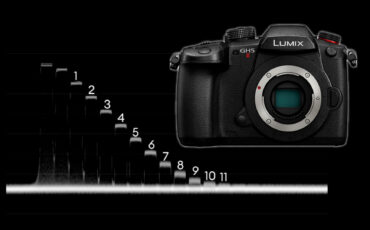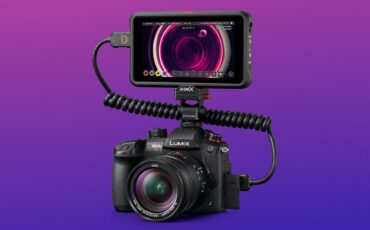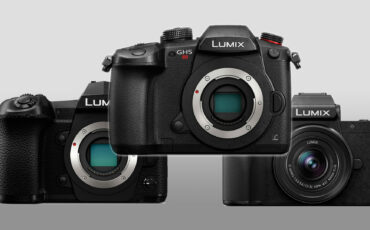Panasonic LUMIX Discussed – An Interview With Yosuke Yamane-san About the GH5 II, GH6 & More
While being in Japan I had the chance to talk to Yosuke Yamane-san, director of Panasonic’s Imaging Unite about the release of the GH5 II, the upcoming GH6, and more. I hope that some of Yamane-san’s answers will satisfy your curiosity and appetite to learn more about the ever-evolving film industry.
What would a visit to Japan be without taking the opportunity to review new cameras, discuss new equipment, and meet people in charge of developing and manufacturing some of the equipment we all use on a daily basis? Precisely, why I am so happy to have met again with Yamane-san in Osaka at Panasonic’s HQ.
Without further ado, here is a transcription of our friendly conversation, in case that you don’t have the time to watch the interview. (Yamane-san’s answers have been translated from Japanese to English.)
Johnnie: First thing first. I see that Panasonic is now strongly pushing their cameras under the LUMIX brand name. Is there a fundamental decision to move away from the name “Panasonic” and market all future cameras under that name? Asking as Panasonic did this kind of marketing move before in other fields with Technics and National just to name a few.
Yamane-san: We have consistently promoted the LUMIX brand since the launch of the digital camera business. In the 20 years since the business was launched, we have sold more than 80 million units, launched many world’s first products as a challenger in the camera industry, and have been supported by many customers.
From now on, while keeping this brand image, we will continue to take on new challenges as a brand that closely supports creators, who create works with particular attention to both video and still images.
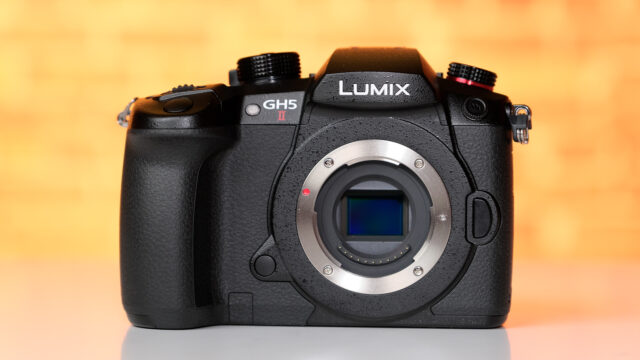
Johnnie: Talking about marketing, I know that for some it might look a bit strange, but how should we name the new GH5 camera. Is it GH5M2, GH5 II, GH5 Mark II? Asking as from an editorial point of view it will be valuable to have a single unified product name.
Yamane-san: In order to emphasize the position as an orthodox evolution model of the GH5, the marketing name is unified with GH5 II, pronounced “GH5 Mark 2”. I am confident that this model, that inherits the DNA of the GH5, which has many fans due to its high video performance, and has evolved many performances, will not only attract GH5 users but can also cultivate new customers.
Johnnie: Talking post-pandemic, is the shortage of electronic components and higher global transportation fees affecting the LUMIX mirrorless division?
Yamane-san: The global shortage of semiconductors and soaring transportation costs are affecting the camera industry, and we are no exception. I myself negotiate directly with suppliers on a daily basis, and at Panasonic as a whole, I try my best to absorb the impact and not cause any inconvenience to customers.
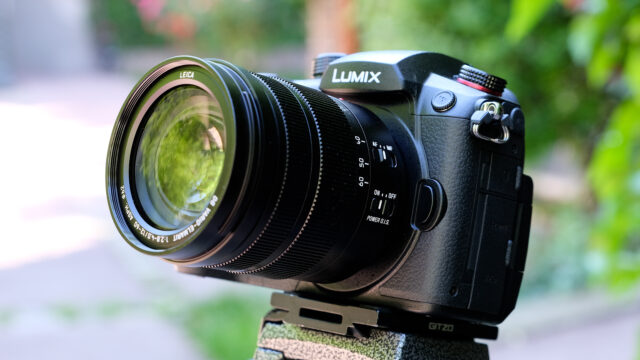
Johnnie: OK, let’s concentrate on the new camera itself. What was the main reason for creating such a camera? Is it because of the many ways we currently produce content, or, Panasonic is trying to satisfy many with one single product?
Yamane-san: The GH5 is used by a wide range of users, from professional video production to personal video streaming such as Youtube. In considering the successor model to the GH5, we grasped the needs of many creators from the shooting sites, usage scenes, and workflows. With the aim of having more creators use it, we came to the conclusion that the optimum model and optimum function are required for each application and therefore proceeded with the development of two models, GH6 and GH5 II.
The GH6 is a flagship model equipped with a newly developed image sensor and a newly developed image processor that enables cutting-edge video expression.
The GH5 II is a model that, while improving the basic performance as a camera, enables easier and higher quality live streaming in order to respond to the rapidly expanding video streaming demand. With these two models, we are confident that even more creators will be able to use LUMIX compared to GH5.
Johnnie: The original GH5 was a legendary camera that offered filmmakers a lot for a very competitive price. Where do you see the strength and positioning of the new GH5 II?
Yamane-san: The strengths of GH5 II are video functions, live streaming function, and reliability. Cinema 4K 60P 4:2:0 10 bit recording is realized, and V-log L is also pre-installed so that it can be used even in professional settings. In addition, it is also equipped with L. Classic Neo and L. Monochrome S, which were first installed in Cinelike D2, V2, and S5, and it possesses high quality even when shooting without post-production. Furthermore, we will meet the growing demand for live streaming by a new wireless live streaming function installed for easily performing live streaming with high image quality. On top of inheriting the DNA of the GH5, it is equipped with a USB charging/power supply function (Power delivery compatible) that supports long-term shooting in addition to unlimited video recording time. It inherits the shooting assist functions of our full-frame camera S1H and is a camera that is closely supporting creators.
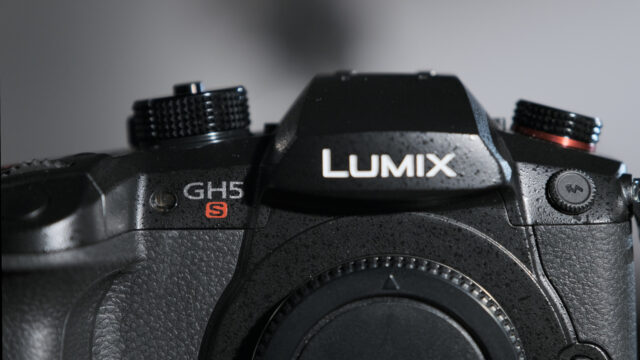
Johnnie: Did you and your team consider at any stage during the development of the camera to merge the GH5 and GH5S cameras into one winning product and offer a good lowlight capability next to a great stabilization system? If yes, why it did not materialize at the end?
Yamane-san: Of course, we are considering all possibilities. At this time, we have developed the GH5 II in combination with the 20 MegaPixel Image sensor, which can provide high-resolution videos and photos in a hybrid manner while responding to new demand for live streaming. We thought that this would provide the UX of this GH5 II to a wide range of use cases, especially to new customers.
Regarding your proposed combination, I can’t say anything about the future. We will continue to explore different possibilities while keeping an eye on industry trends, market reactions, and needs.
Johnnie: Many of our followers would love to know why Panasonic is not moving away from “contrast base AF” to “Phase-detection AF” especially in video mode. From the outside it looks as if Panasonic is fully aware of the need to implement a reliable AF system in its mirrorless cameras by dedicating LOTS of resources to achieve this, yet, customers (Especially single operators) would love to have an even more reliable AF system inside LUMIX cameras. Why the move to “phase-detection AF” is not happening?
Yamane-san: As you can imagine, we are continuing to research various focusing approaches, but contrast AF with DFD technology still has technological potential to provide practical performance to our customers.
In the first place, from the viewpoint of distance measurement performance, contrast AF with DFD technology covers an arbitrary area in the entire screen compared to the image-plane phase-detection method that measures the distance from phase difference pixels arranged at a specified location on the screen. Since it is possible to measure the distance, I think it is possible to provide accurate focusing regardless of the position of the subject. In addition, since the distance is measured from the video signal itself, the image quality potential of the image sensor can be maximized without worrying about pixel loss, and the performance in dark places is sufficient. Furthermore, it is more likely that we will be able to offer the same level of performance to as many models as possible also in terms of price, regardless of the type of image sensor.
Of course, we have received various opinions from our customers, and we recognize that image-plane phase-detection AF is superior in terms of subject tracking. On the other hand, as represented by deep learning, we are improving AF performance by strengthening algorithms that utilize the video signal processing technology which we are good at.
We are currently developing the next-generation system with the aim of making it even more practical, so please wait until the day we can provide it.
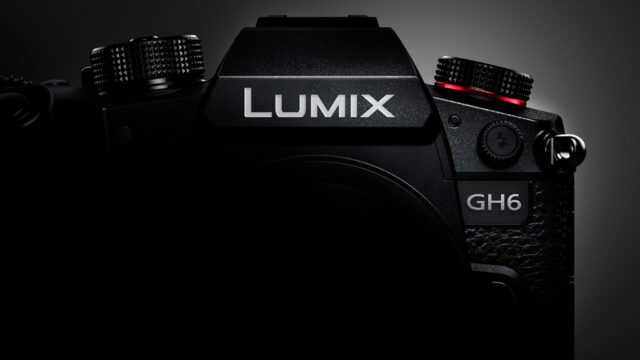
Johnnie: Next to the GH5II Panasonic also made a development announcement of the GH6. Logically thinking, this new camera will have to have a “deal-breaker feature(s)” in order to differentiate itself from the GH5 II and more ever, take the M4/3 system a big step forward in order to keep it relevant in today’s hard competition. Is there anything you can expose already in order to trigger the imagination of filmmakers?
Yamane-san: Unfortunately, I can’t give you more information here than we’ve disclosed, as the GH6 is still in the development announcement stage, but I’m confident that some factors will inspire those people’s imagination. We are also working hard on development, so please look forward to it.
Johnnie: Most other reputable camera manufacturers already have 8K cameras in the market. Last we spoke, you indicated the 2020 Olympic Games as a possible time to present a new LUMIX 8K camera. Can you please be kind and share with us where Panasonic is with that specific plan?
Yamane-san: When we met last time, I talked about trying (to deliver) 8K at the timing of the Olympics. We have been developing the technology with the aim of achieving this, but looking at the current situation, I think the reality is that the penetration of the 8K culture itself has stagnated. We will consider the timing of commercialization after anticipating the growing needs of our customers for 8K.
Johnnie: One question regarding lenses…Affordable anamorphic lenses are very hard to find. (Besides one company, we don’t really know of any others doing so). Panasonic is constantly bringing new affordable fixed focal length L-Mount lenses to the market, but did you ever consider doing anamorphic lenses too? After all, it can give a huge push to the L- Mount system altogether!
Yamane-san: Panasonic provides functions that support shooting on the body side, such as anamorphic mode and anamorphic de-squeeze display, for creators who shoot works using anamorphic lenses.
On the other hand, an anamorphic lens itself requires engineering design technology and manufacturing technology that are significantly different from ordinary lenses, so we would like to consider what kind of value Panasonic can provide in addition to market needs for full-frame anamorphic lenses.
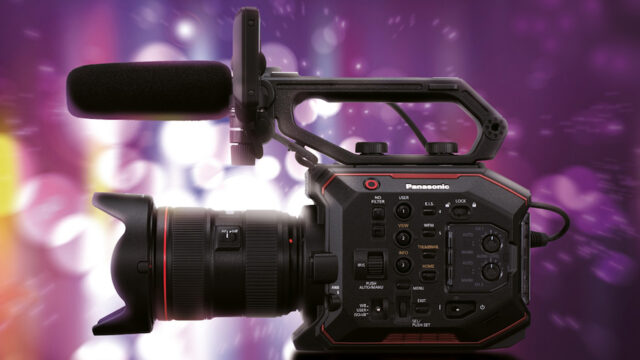
Johnnie: Many of our followers are wondering what has happened to Panasonic’s professional camera line. Do you still plan to release new Varicam or EVA-like cameras in the near future, or, for now, the effort of the division is to enhance and strengthen the LUMIX line of mirrorless cameras”?
Yamane-san: Since my department develops LUMIX, unfortunately, I cannot answer, because Varicam and EVA are different categories.
With a different shape than Varicam or EVA, LUMIX plans to further strengthen its products, which can be used for professional purposes such as cinema photography.
Insight
Listening carefully to what Yamane-san had to say, it seems as if Panasonic is working hard to deliver capable tools for all sorts and levels of content creators. Also, it’s interesting to see that Panasonic is far from giving up on its current autofocus system as they believe it can be improved even further for better performance. Last but not least, we should probably not wait for a Panasonic 8K camera anytime soon.
Guys, what’s your opinion about the LUMIX line of cameras? Is there something you are missing and want to see in their next batch of models? Please share with us your thoughts in the comment section below.

